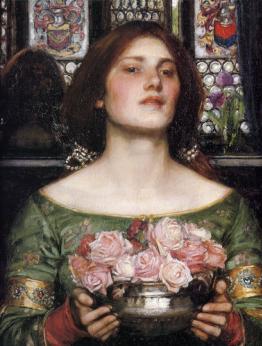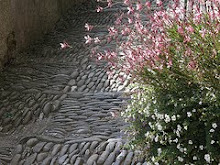 For they believe that whatever grows on these trees is sent from heaven, and is a sign that the tree has been chosen by the gods themselves. The mistletoe is very rarely to be met with; but when it is found, they gather it with solemn ceremony. This they do above all on the sixth day of the moon, from whence they date the beginnings of their months, of their years, and of their thirty years cycle, because by the sixth day the moon has plenty of vigour and has not run half its course.
For they believe that whatever grows on these trees is sent from heaven, and is a sign that the tree has been chosen by the gods themselves. The mistletoe is very rarely to be met with; but when it is found, they gather it with solemn ceremony. This they do above all on the sixth day of the moon, from whence they date the beginnings of their months, of their years, and of their thirty years cycle, because by the sixth day the moon has plenty of vigour and has not run half its course.After due preparations have been made for a sacrifice and a feast under the tree, they hail it as the universal healer and bring to the spot two white bulls, whose horns have never been bound before. A priest clad in a white robe climbs the tree and with a golden sickle cuts the mistletoe, which is caught in a white cloth. ... - from 'Naturalis Historia' (XVI, 95) by Pliny the Elder
 When cut down at the Winter Solstice as the sun is reborn, this divine spark of the gods is drawn down to earth symbolizing the moment of conception, although the plant is prevented from actually touching the ground and its sacredness preserved by catching it in a white cloth.
When cut down at the Winter Solstice as the sun is reborn, this divine spark of the gods is drawn down to earth symbolizing the moment of conception, although the plant is prevented from actually touching the ground and its sacredness preserved by catching it in a white cloth.The golden sickle used to cut the mistletoe represents both the sun and the moon - a union of male and female energies. The gold symbolizing the sun and the shape of the crescent blade resembling the quarter moon. ...
Pliny also tells of the sacrifice of two white bulls and, in common with the oak, the bull is sacred to Taranis. Whilst the bull (like his zodiacal counterpart Taurus) is an earth symbol, his horns reach skywards in the shape of a crescent moon, linking earth with the realm of the gods. - Steve Tatler

1. Henri Paul Motte, Druids Cutting the Mistletoe on the Sixth Day of the Moon, circa 1890-1900 [more information from ArtMagick]
2. [information unknown]
3. E. A. Hornel and George Henry, The Druids Bringing in the Mistletoe, 1890
In the Artist's Footsteps

Image to the left is from the Kelvingrove Art Gallery and Museum
The Druids Bringing in the Mistletoe will be included in the Glasgow Boys exhibition to be shown 30 October 2010 until 23 January 2011 at the Royal Academy of Arts, London


























No comments:
Post a Comment